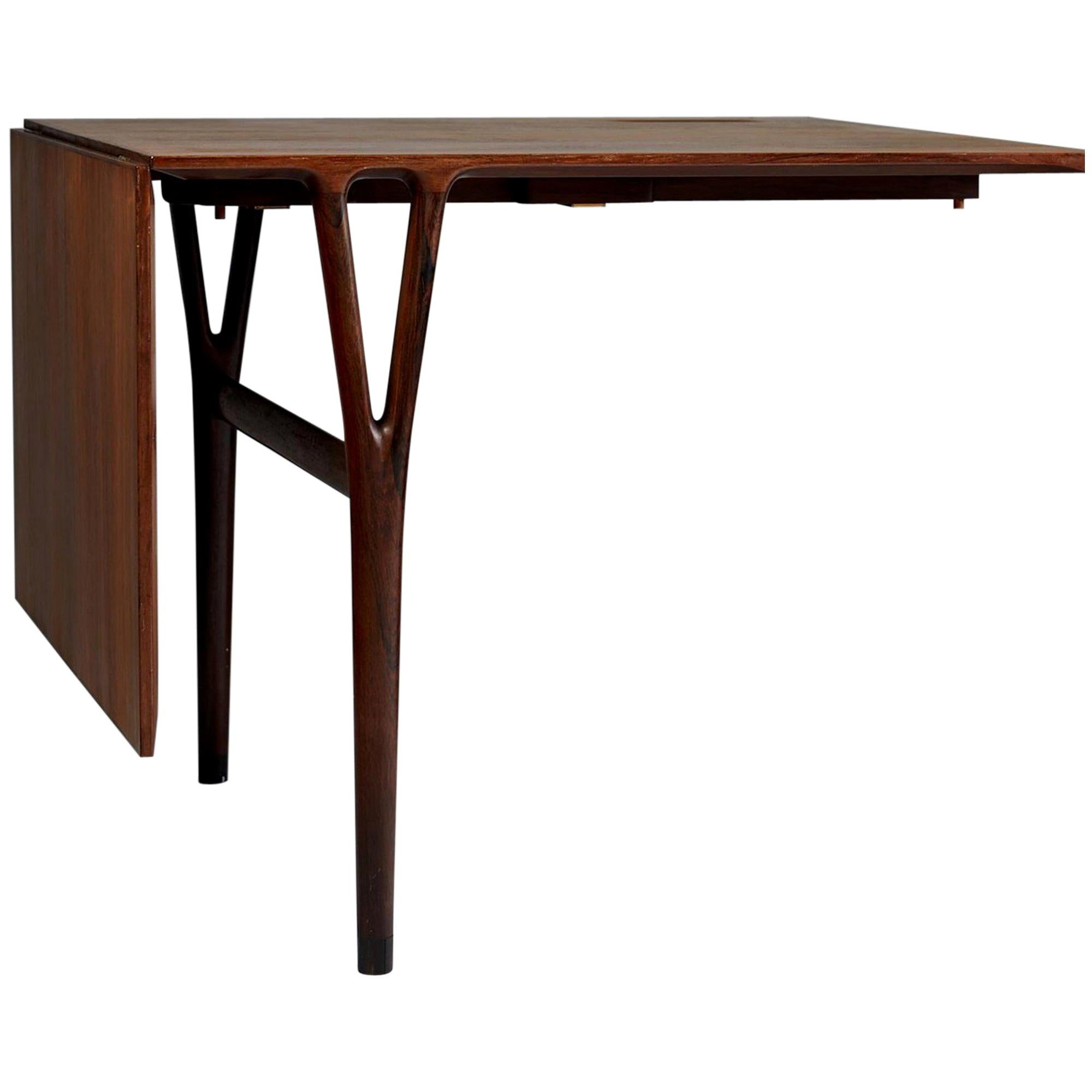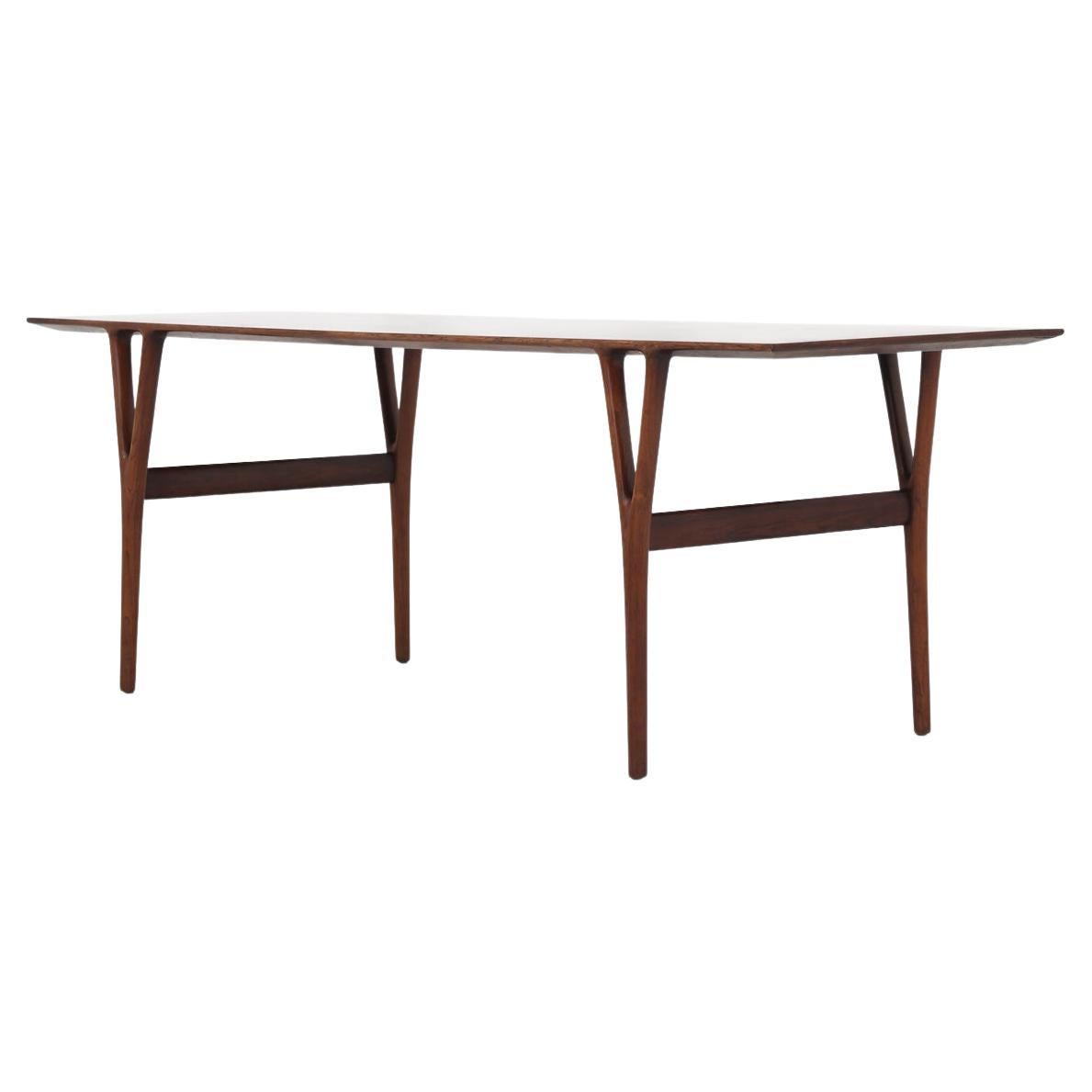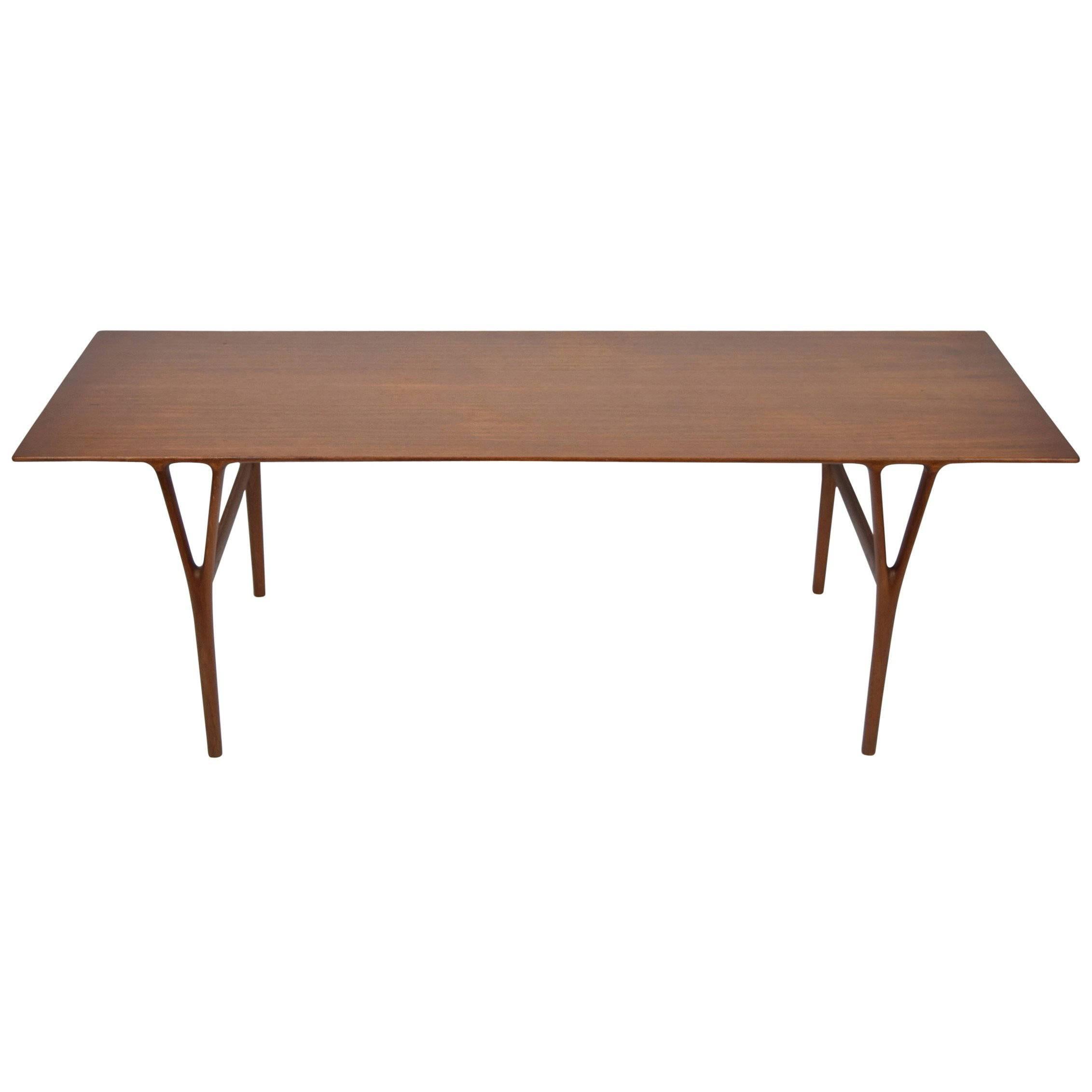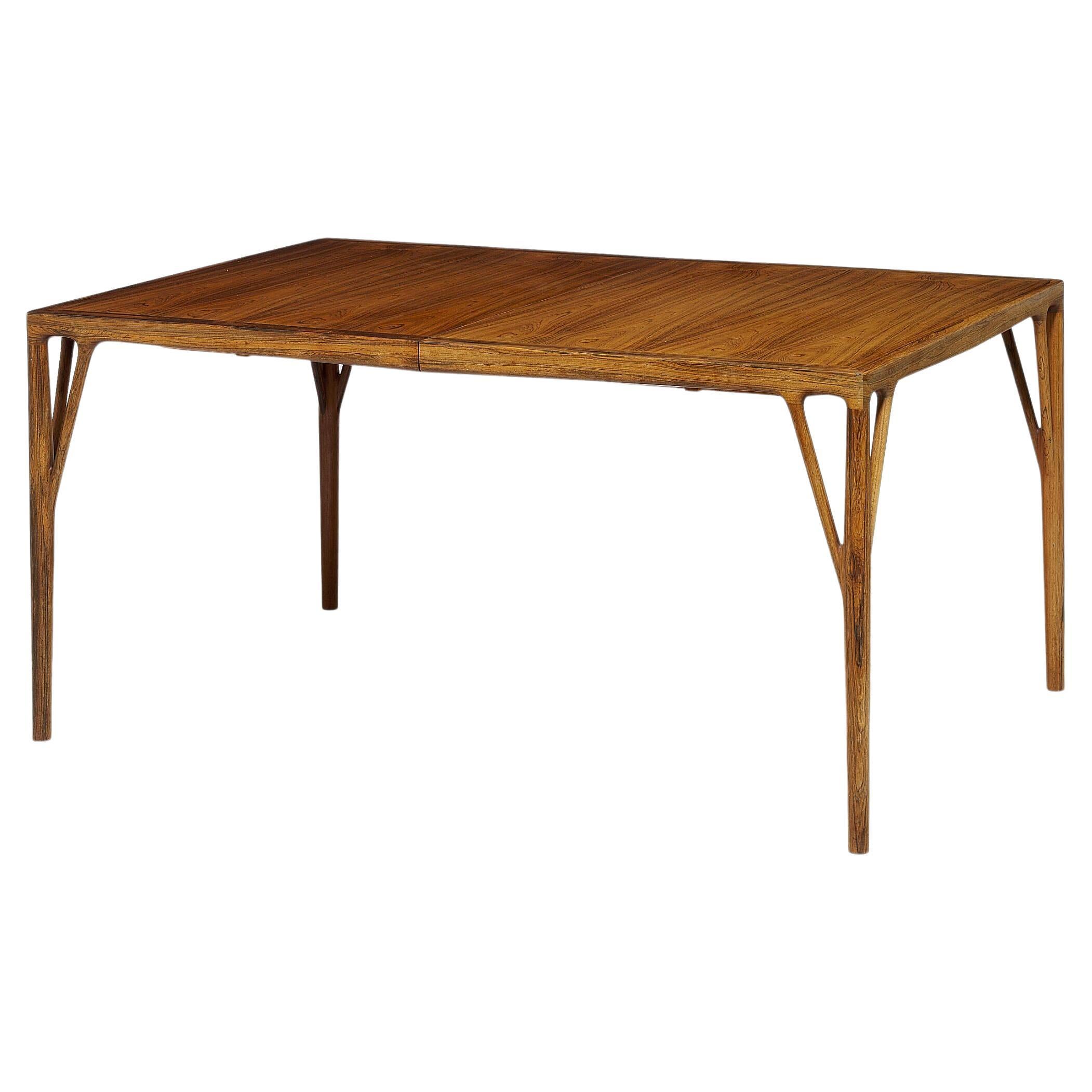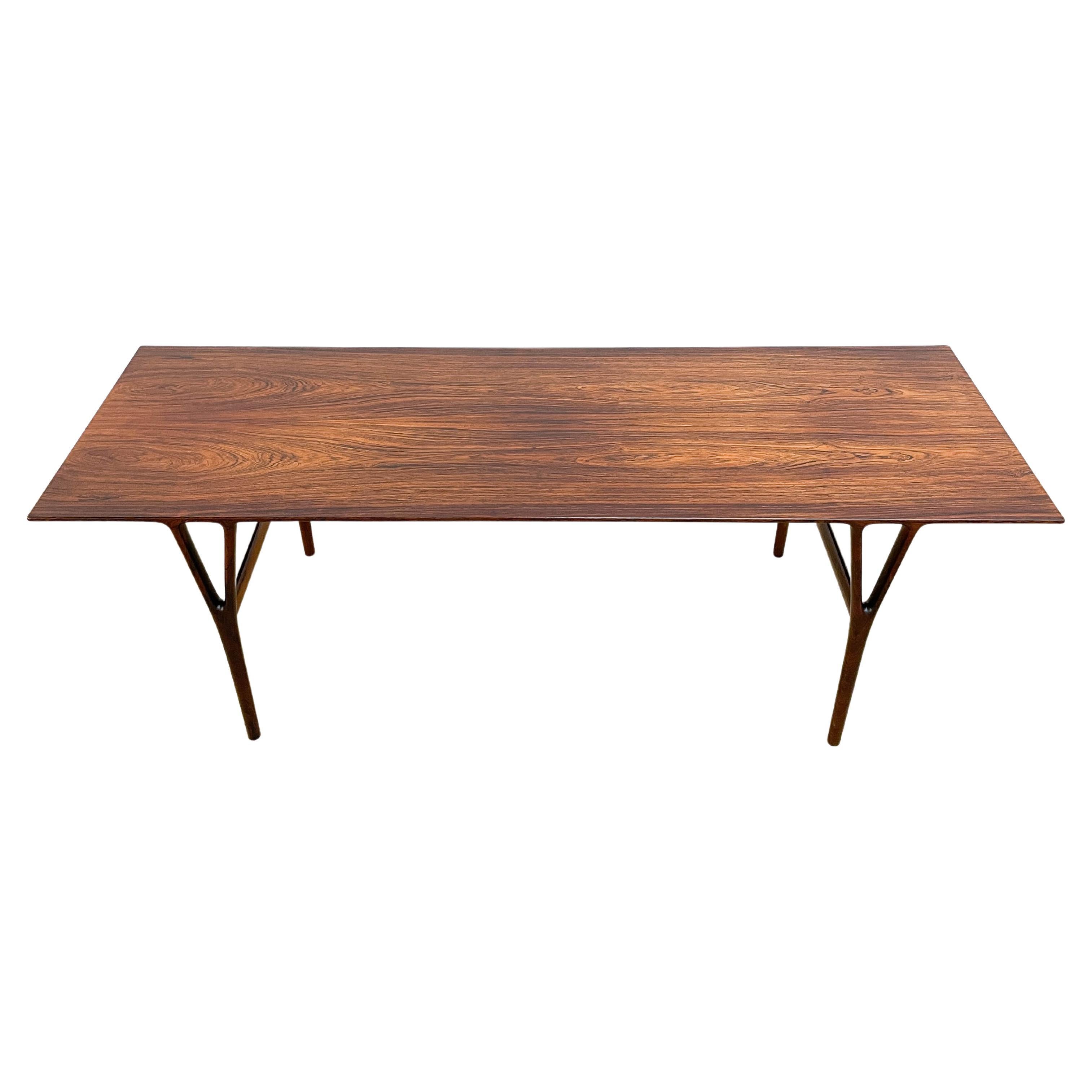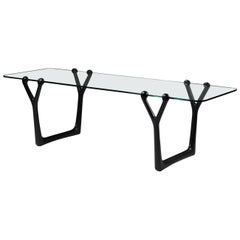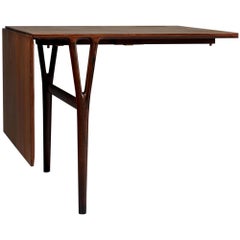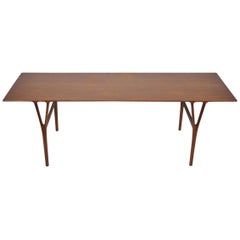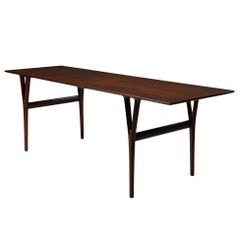
Occasional Table Designed by Helge Vestergaard Jensen, Denmark, 1950s
View Similar Items
Want more images or videos?
Request additional images or videos from the seller
1 of 7
Occasional Table Designed by Helge Vestergaard Jensen, Denmark, 1950s
About the Item
- Creator:Helge Vestergaard-Jensen (Designer)
- Dimensions:Height: 19.69 in (50 cm)Width: 59.06 in (150 cm)Depth: 19.69 in (50 cm)
- Style:Scandinavian Modern (Of the Period)
- Materials and Techniques:Rosewood
- Place of Origin:Denmark
- Period:1950-1959
- Date of Manufacture:1950s
- Condition:
- Seller Location:Stockholm, SE
- Reference Number:1stDibs: LU100664018433
About the Seller
5.0
Recognized Seller
These prestigious sellers are industry leaders and represent the highest echelon for item quality and design.
Gold Seller
These expertly vetted sellers are highly rated and consistently exceed customer expectations.
Established in 1998
1stDibs seller since 2013
184 sales on 1stDibs
Typical response time: 1 hour
More From This SellerView All
- Occasional Table Designed by Helge Vestergaard Jensen, Unique, Denmark 1954By Helge Vestergaard-JensenLocated in Stockholm, SEOccasional table designed by Helge Vestergaard Jensen, Denmark, 1954. Unique. Manufactured by Thysen Nielsen. Ebonised wood and original clear glass. Exhibited at the Cabinet Make...Category
Vintage 1950s Danish Mid-Century Modern Tables
MaterialsGlass
- Wall Hung Table Designed by Helge Vestergaard Jensen, Denmark, 1950sBy Helge Vestergaard-JensenLocated in Stockholm, SEWall hung table designed by Helge Vestergaard Jensen, for Peder Pedersen, Denmark. 1950's. Brazilian rosewood. Dimensions: H: 73 cm/ 28 3/4'' L: 90 c...Category
Vintage 1950s Danish Mid-Century Modern Drop-leaf and Pembroke Tables
MaterialsRosewood
- Occasional table/ Bench model 5274, designed by Börge Mogensen, Denmark 1950sBy Børge MogensenLocated in Stockholm, SEOccasional table/ Bench model 5274, designed by Börge Mogensen for Fredericia Stolefabrik, Denmark. 1950s. Oak and cane. Measurements: W: 69 cm/ 27" D: 69 cm/ 27" H: 35 cm/ 13 3/4"Category
Vintage 1950s Danish Mid-Century Modern Tables
MaterialsCane, Oak
- Occasional Table Designed by Josef Frank for Svenskt Tenn, Sweden, 1950sBy Josef FrankLocated in Stockholm, SEOccasional table designed by Josef Frank for Svenskt Tenn, Sweden. 1950s. Mahogany. H: 45 cm L: 80 cm D: 40 cm Josef Frank was a true European, he was also a pioneer of what would become classic 20th century Swedish design and the “Scandinavian Design Style”. Austrian- born Frank started his design career as an architect after having trained at the Technische Hochschule in Vienna between 1903 and 1910. After his training he went on to teach at Kunstgewerbeschule (The Viennese School of Arts and crafts) where he developed and espoused the new school of modernist thinking towards Architecture and Design that was coming to fruition in Vienna at the time. He also went on to lead the Vienna Werkbund throughout the 1920s. This was a truly progressive group of Architects and Designers who set about improving the daily lives of Austrian people through modernist design and architecture in partnership with Arts and Crafts ideals and construction. Frank’s leadership of the Werkbund had already cemented his place at the forefront of European design. Frank’s time in Vienna was typified by his design for the “Die Wohnung” exhibition of the Deutscher Werkbund in Stuttgart, 1927 where he exhibited along side his contemporaries at the forefront of design, such as the likes of Le Corbusier and Walter Gropius. Here he showed a specially designed pair of flat-roofed reinforced concrete houses in what is now seen as a typical modernist style. What separated Frank’s house from the other 32 houses of the exhibition was the interior and furniture inside the building. It was described as “Neo-Classical” and filled with an eclectic mix of period pieces, modern design and pieces designed by Frank himself that seemed to cross the two worlds. This was a complete opposite direction to that which his fellow Architects were travelling in with their pared back and angular aesthetics. Frank said of his own work: “The house is not a work of art, simply a place where one lives,” and by this reasoning Frank rejected the regimental mechanisation of the living space that his contemporaries believed in, instead he set about creating congenial and spontaneous interiors. Frank’s practice saw him placing the bright colours and the soft forms of nature back into the furnishings and interiors that he thought modernism sorely mist. Frank, along with Oskar Walch set up Haus und Garten in Vienna in 1925. This was Frank’s first commercial foray into furniture and home furnishings and the company went on to become the most influential furnishing house in Vienna with a riotous depth of colour and interesting shapes becoming the trademark of their design. However this success was to come to an end with rise of Nazism in Vienna in the early 1930’s. Frank was Jewish, and he and his wife Anna decided they would leave Vienna for her motherland: Sweden, in 1933. Frank continued to design for Haus and Garten, visiting Vienna occasionally and designing the pieces that would continue to be the company’s best...Category
Vintage 1950s Swedish Scandinavian Modern Tables
MaterialsMahogany
- Occasional Table/ Bench Model 5273, Designed by Börge Mogensen, Oak, Cane, 1950sBy Børge MogensenLocated in Stockholm, SEOccasional table/ Bench model 5273, designed by Börge Mogensen for Fredericia Stolefabrik, Denmark. 1950's. Oak and cane.Category
Mid-20th Century Danish Mid-Century Modern Tables
MaterialsOak, Cane
- Occasional Table Anonymous, Denmark, 1950sLocated in Stockholm, SEOccasional table anonymous, Denmark. 1950s. Brazilian rosewood. Irregular form. Dimensions: H: 58 cm/ 22 3/4'' L: 80 cm/ 31 1/2'' D: 60 cm/ 23 1/2''Category
Vintage 1950s Swedish Scandinavian Modern Coffee and Cocktail Tables
MaterialsRosewood
You May Also Like
- Coffee Table by Helge Vestergaard JensenBy Helge Vestergaard-JensenLocated in Copenhagen, DKModel U55 - coffee table in rosewood with V-shaped legs. Designed in 1955. Helge Vestergaard Jensen / Peder Pedersen.Category
Mid-20th Century Danish Scandinavian Modern Coffee and Cocktail Tables
MaterialsRosewood
- Coffee Table by Helge Vestergaard-JensenBy Helge Vestergaard-JensenLocated in Dallas, TXCoffee table model number U55, teak top with solid Y shaped legs, cross bar stretchers. Made by master cabinetmaker Peder Pedersen.Category
Vintage 1950s Danish Scandinavian Modern Coffee and Cocktail Tables
MaterialsTeak
$3,880 Sale Price20% Off - Extendable Rosewood Dining Table by Helge Vestergaard Jensen DenmarkBy Helge Vestergaard-Jensen, Peder PedersenLocated in Vienna, ATThis Scandinavian Modern Extendable Danish dining table was designed by Helge Vestergaard Jensen in the late 1950s and was manufactured by Peder Pedersen in the 1960s in Denmark. We ...Category
Vintage 1960s Danish Scandinavian Modern Dining Room Tables
MaterialsRosewood
- Helge Vestergaard Jensen Rosewood Dining TableBy Helge Vestergaard-Jensen, Peder PedersenLocated in London, GBThis table is 270cm long when extended and 150cm long without extensions. The width is 100cm. The height is 77cm. Unlike the table made by Sigh and Sonner that I have listed sepa...Category
Vintage 1960s Danish Scandinavian Modern Dining Room Tables
MaterialsRosewood
- Rosewood Coffee Table by Helge Vestergaard JensenBy Helge Vestergaard-Jensen, Peder PedersenLocated in Kalamazoo, MIThis rare and exquisitely well-crafted coffee table model U55 was designed by Helge Vestergaard Jensen and made by cabinetmaker Peder Pedersen in the 1950s. The coffee table's most e...Category
Mid-20th Century Danish Mid-Century Modern Coffee and Cocktail Tables
MaterialsRosewood
- Helge Vestergaard Jensen Dining Table Produced by Peder Pedersen in DenmarkBy Helge Vestergaard-JensenLocated in Limhamn, Skåne länVery rare dining table designed by Helge Vestergaard Jensen. Produced by Peder Pedersen in Denmark. Measure: Width: 130 ( 310) cm.Category
Vintage 1950s Danish Scandinavian Modern Dining Room Tables
MaterialsBrass

